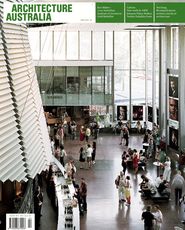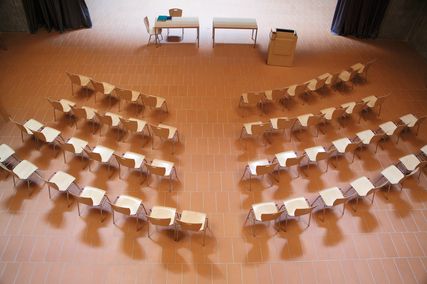I graduated into the last recession. No one graduating in the year before me, my year or the one after got a conventional job in architectural practice. (Actually, one person did, but he wasn’t paid.) Although disappointing, this didn’t come as a big surprise. We had begun our degrees in the boom times of the eighties, but on the very first day of architecture school we were told in no uncertain terms that it would not last, that architecture was cyclical, that it was a fascinating field but not a reliable source of steady or increasing income. If we wanted that, we had better change degrees. This message was reinforced in various ways throughout my education. Of course there was an element of the old, entrenched and highly problematic architectural masochism in this – “if you really love it you’ll do it for nothing”. But, nonetheless, it helped prepare us for when the stock market did crash. By then we had become resourceful in thinking about what architecture was and how we might be involved in it. We expected it to challenge and interest us, and we hoped we would be able to contribute through it, but we never thought it would make us rich. On graduating, most of us found interesting bits and pieces to do on the edges of the discipline while still managing to pay the rent. Over time, some eventually did make it into conventional architectural practice, while others made varied careers in related fields.
With this as a formative experience of architecture I often found the frenetic prosperity of recent years a little unreal, and the expectation that it would simply keep going rather worrying. But, then, it was very long run of good times. Indeed, my generation is the last to have a memory of trying to work in difficult economic times. (We are also the last to have not been saddled with significant loans in order to complete our degrees.) Those older can name two or three downturns and eloquently describe the fundamental effects that multiple economic cycles have had on their careers – on opportunities available, paths taken and decisions made. But did we forget to pass this knowledge on this time? Did those who are about to graduate receive the same messages that I did almost twenty years ago? (And if so, did they hear them?) Or did we allow young architects who have only known a buoyant environment, complete with interesting projects and increasing salaries, to believe that that is what the profession is like all the time?
There is a great deal of knowledge embedded in the profession about operating in and surviving the tough times. Of course the circumstances of each economic shift are different; but, past experiences are important and useful for devising future strategies. I hope that this knowledge will be passed on and not hoarded as a “competitive advantage” as practices struggle to find work and pay staff. The ability to continue building a robust profession and discipline in the face of economic uncertainty relies on such shared knowledge and experience and, in the end, that is to the advantage of us all.
Justine Clark, editor Architecture Australia.















